
Navratri Colours 2024: Welcoming 9 Days of Worship with a Palette of Different Colors and Shades
Navratri is celebrated in various ways around the country. The most important idea behind the Navratri festival, however, is the triumph of the Hindu goddess Kali or Durga. Many people around the country celebrate Navratri by fasting and preparing special dishes and beverages at home. Throughout the nine days of Navratri celebrations at home, they dress up in different Navratri colours and visit friends and relatives.
Shardiya Navratri is a Hindu festival of spiritual introspection, fasting, and prayer. Many Hindus believe that the holy force of Goddess Durga is at her greatest during these nine nights. Devotees pray to her for wealth, happiness, and protection from evil.
They also revere her nine manifestations, each of which represents a distinct aspect of her might and grace. Shailaputri, Brahmacharini, Chandraghanta, Kushmanda, Skandamata, Katyayani, Kaalratri, Mahagauri, and Siddhidatri are among them.
Shardiya Navratri is distinguished by the fact that each day of the festival is connected with a different hue, each having its spiritual meaning. These colours represent the goddess’s attitude and qualities, as well as the followers.
They also contribute to the joyful atmosphere and delight of the occasion. During Navratri, many people wear one of these colours in their garments or accessories to respect the goddess and seek her favour. We have combined the Navratri colours 2024 list below.

Navratri Colours 2024 List: 9 Colours of Navratri 2024
1. Day 1: Pratipada – Orange (Shailaputri)
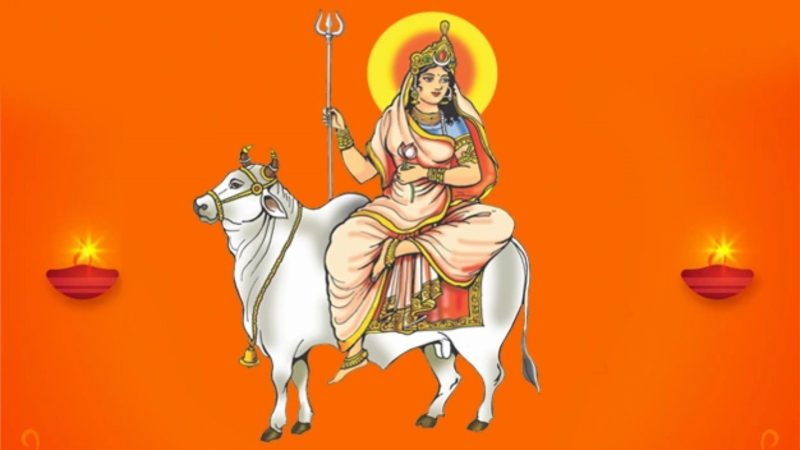
The first day of Navratri is dedicated to Shailaputri, which means “daughter of the mountains”. She is the Goddess Durga’s first appearance, and she represents nature and purity. She rides a bull while holding a trident and a lotus in her hands. She is also referred to as Parvati, Hemavati, and Sati.
Orange is the Navratri colour of this day, which signifies energy and enthusiasm. It also represents the commencement of a fresh beginning and the promise of a bright future. Wearing orange on this day evokes Shailaputri’s blessings for courage, vitality, and happiness.
2. Day 2: Dwitiya – White (Brahmacharini)

Brahmacharini, which means “one who practises austerity,” is honoured on the second day of Navratri. She is the Goddess Durga’s second appearance, and she signifies wisdom and understanding. She walks barefoot and dresses in white. She is holding a rosary and a water pot. Tapascharini, Aparna, and Uma are some of her other names.
White is the Navratri colour of this day, which signifies purity and peace. It also represents knowledge, wisdom, and enlightenment. Wearing white on this day evokes Brahmacharini’s blessings for clarity, peace, and dedication.
3. Day 3: Tritiya – Red (Chandraghanta)
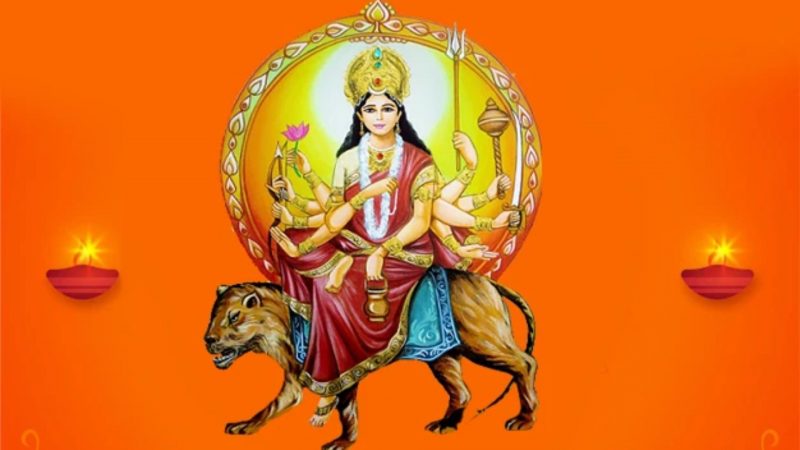
Chandraghanta, which means “one with a crescent moon on her forehead,” is honoured on the third day of Navratri. She is the Goddess Durga’s third form, and she signifies beauty and fearlessness. She rides a tiger and dresses in red. She has 10 arms and a variety of weapons in her hands. She goes by the names Chandika, Rannchandi, and Shakti.
Red is the Navratri colour of this day, which signifies passion and power. It is also associated with affection, warmth, and enthusiasm. Wearing red on this day attracts Chandraghanta’s blessings for boldness, confidence, and charisma.
4. Day 4: Chaturthi – Royal Blue (Kushmanda)
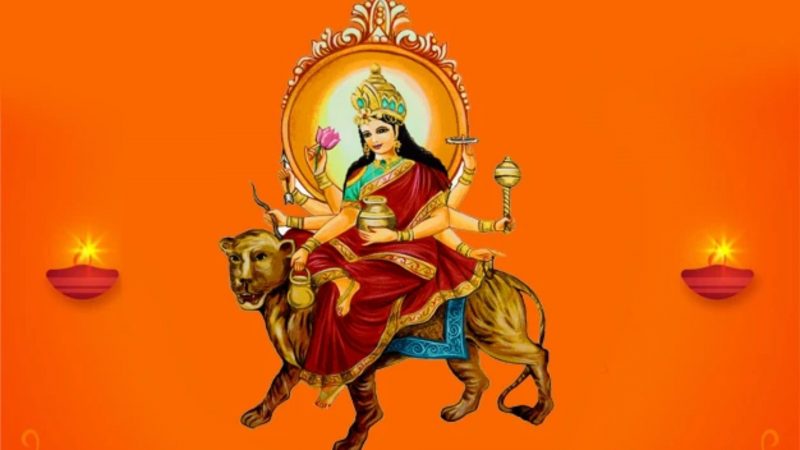
Kushmanda, which means “one who created the universe,” is honoured on the fourth day of Navratri. She is Goddess Durga’s fourth avatar and signifies creativity and joy. She rides a lion and dresses in brilliant blue. She has eight arms and is holding a lotus, a rosary, a kamandalu (water container), a bow, an arrow, a jug of nectar, a discus, and a mace. Adi Shakti, Ashtabhuja Devi (eight-armed goddess), and Annapurna (food-giver) are some of her other names.
Royal Blue is the Navratri colour of this day, which signifies strength and calmness. It is also associated with monarchy, dignity, and elegance. Wearing royal blue on this day invites Kushmanda’s offerings of creativity, riches, and joy.
5. Day 5: Panchami – Yellow (Skandamata)
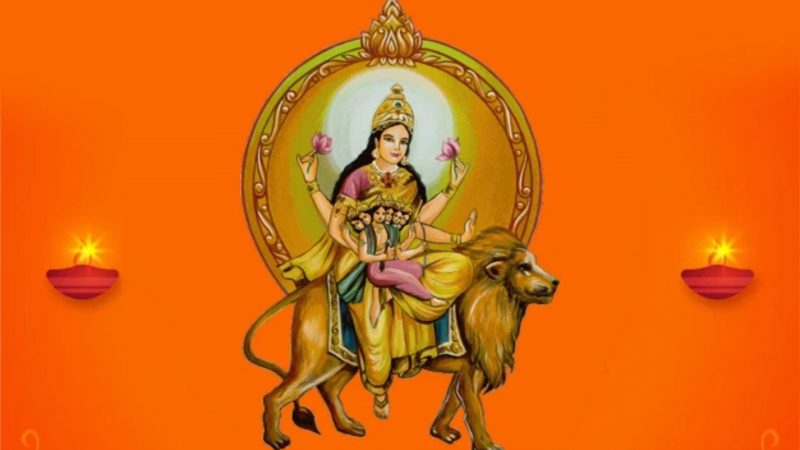
Skandamata, which means “mother of Skanda (Kartikeya),” is honoured on the fifth day of Navratri. She is Goddess Durga’s fifth appearance, and she signifies motherhood and compassion. She rides a lion and dresses in yellow. She has four arms and is holding her kid Skanda in one of them. In her hands, she also holds a lotus and a water vessel. Padmasana Devi (one who sits on a lotus), Parvati, and Maheshwari are some of her other names.
Yellow is the Navratri colour of this day, which signifies happiness and optimism. It also represents sunlight, brightness, and joy. Wearing yellow on this day evokes Skandamata’s blessings of joy, wealth, and harmony.
6. Day 6: Shashthi – Green (Katyayani)
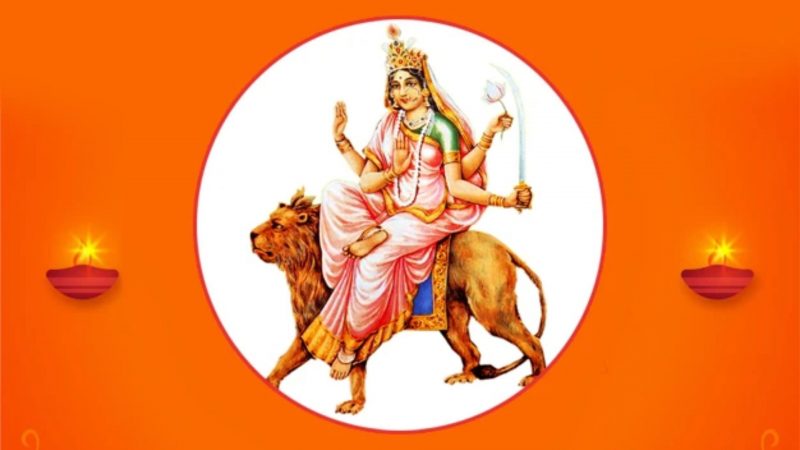
Katyayani, which means “one born in the Katyayan lineage,” is honoured on the sixth day of Navratri. She is the sixth incarnation of Goddess Durga, and she signifies bravery and victory. She rides a lion and dresses in green. She has four arms and holds a sword, a shield, a lotus, and a blessing mudra (gesture) in her hands. She is also known as Mahishasura Mardini (the demon Mahishasura’s killer), Bhadrakali, and Jagadamba.
Green is the Navratri colour of this day, which signifies growth and harmony. It also represents nature, fertility, and harmony. Wearing green on this day evokes Katyayani’s blessings for courage, success, and health.
7. Day 7: Saptami – Grey (Kalaratri)

Kalaratri, which means “one who is the death of time,” is honoured on the seventh day of Navratri. She is Goddess Durga’s seventh avatar, and she signifies both devastation and release. She rides a donkey and dresses in grey. She has four arms and wields a sword, a trident, a thunderbolt, and a brave mudra (gesture) in her hands. She is also known as Shubhankari (good-doer), Bhairavi, and Chamunda.
Grey is the Navratri colour of this day, which signifies subtlety and mystery. It also represents the grandeur of the universe and the ability to overcome obstacles. Wearing grey on this day invites Kalaratri’s benefits of protection, detachment, and change.
8. Day 8: Ashtami – Purple (Mahagauri)
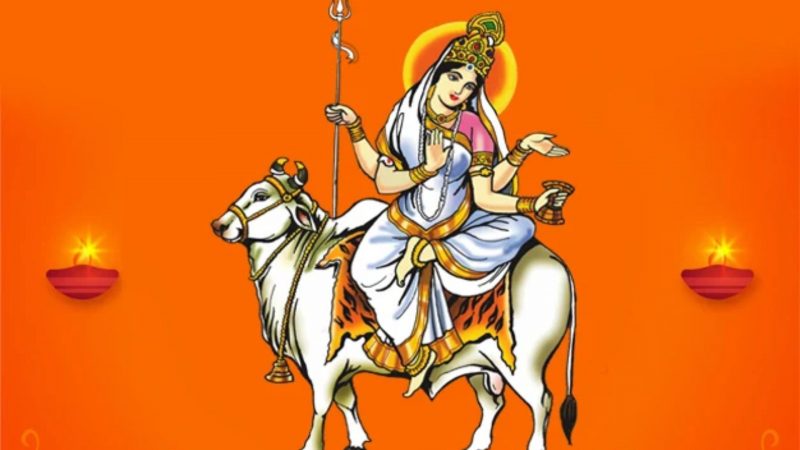
Mahagauri, which means “one with a fair complexion,” is honoured on the eighth day of Navratri. She is the Goddess Durga’s eighth appearance, and she embodies beauty and elegance. She rides a bull and dresses in purple. She has four arms and carries a trident and a damaru (drum). She also makes mudras (gestures) of blessing and fearlessness with her hands. She is also known as Shwetambardhara, Gauri, and Shailputri.
Purple is a Navratri colour that is often associated with luxury, grandeur, and nobility. If you worship Navdurga in purple, it is thought that she would shower prosperity and wealth on you. So, do not be afraid to wear a beautiful purple outfit to receive the blessings of the goddess.
9. Day 9: Navami – Peacock Green (Siddhidatri)
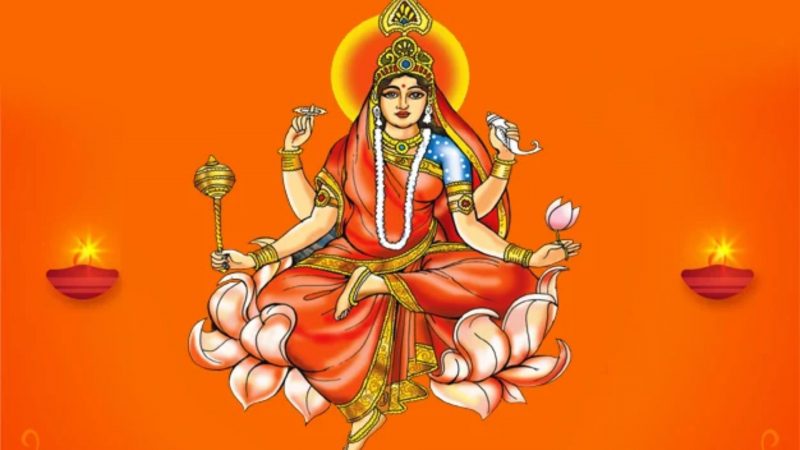
The ninth day of Navratri is devoted to Siddhidatri, which means “one who grants all siddhis (supernatural powers)”. She is the Goddess Durga’s ninth appearance, and she signifies perfection and fulfilment. She mounts a lotus or a lion and dresses in peacock green. She has four arms and is holding a lotus, a mace, a discus, and a conch shell. She is also referred to as Saraswati (the goddess of learning), Lakshmi (the goddess of riches), and Gayatri (the goddess of knowledge).
Peacock Green is the Navratri colour of this day, which signifies richness and diversity. It also represents nature’s splendour, grandeur, and beauty. Wearing peacock green on this day asks Siddhidatri’s blessings for perfection, fulfilment, and enlightenment.



